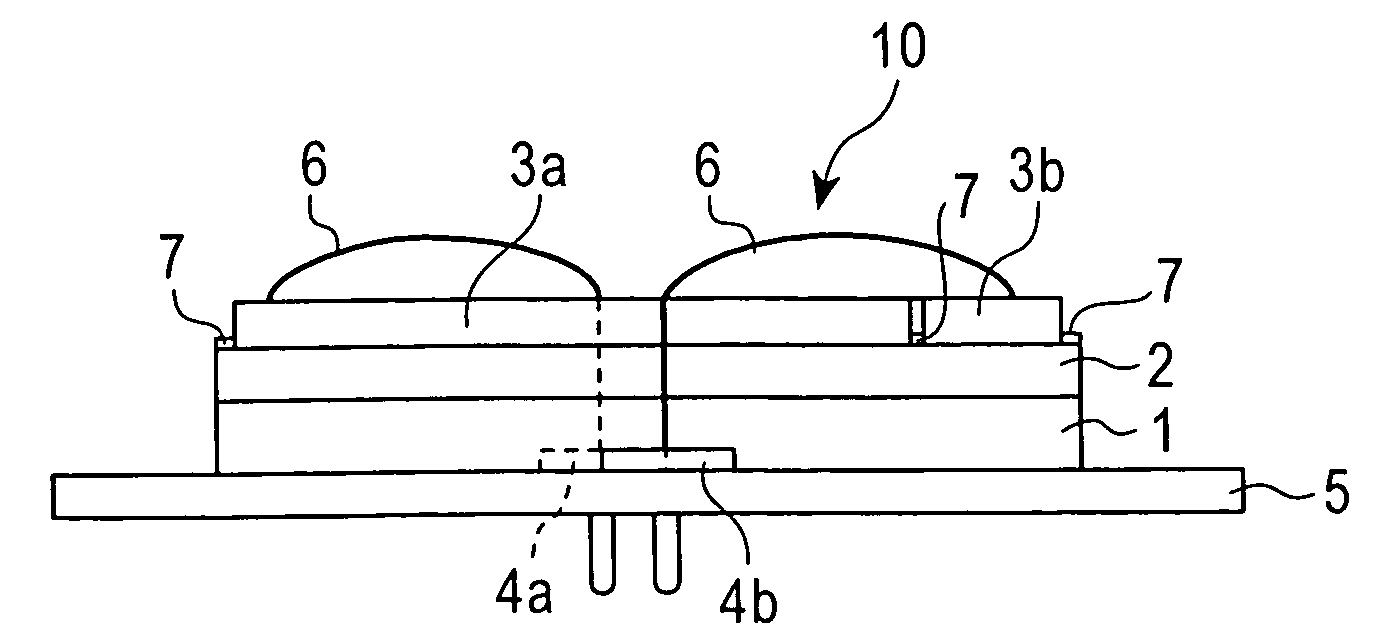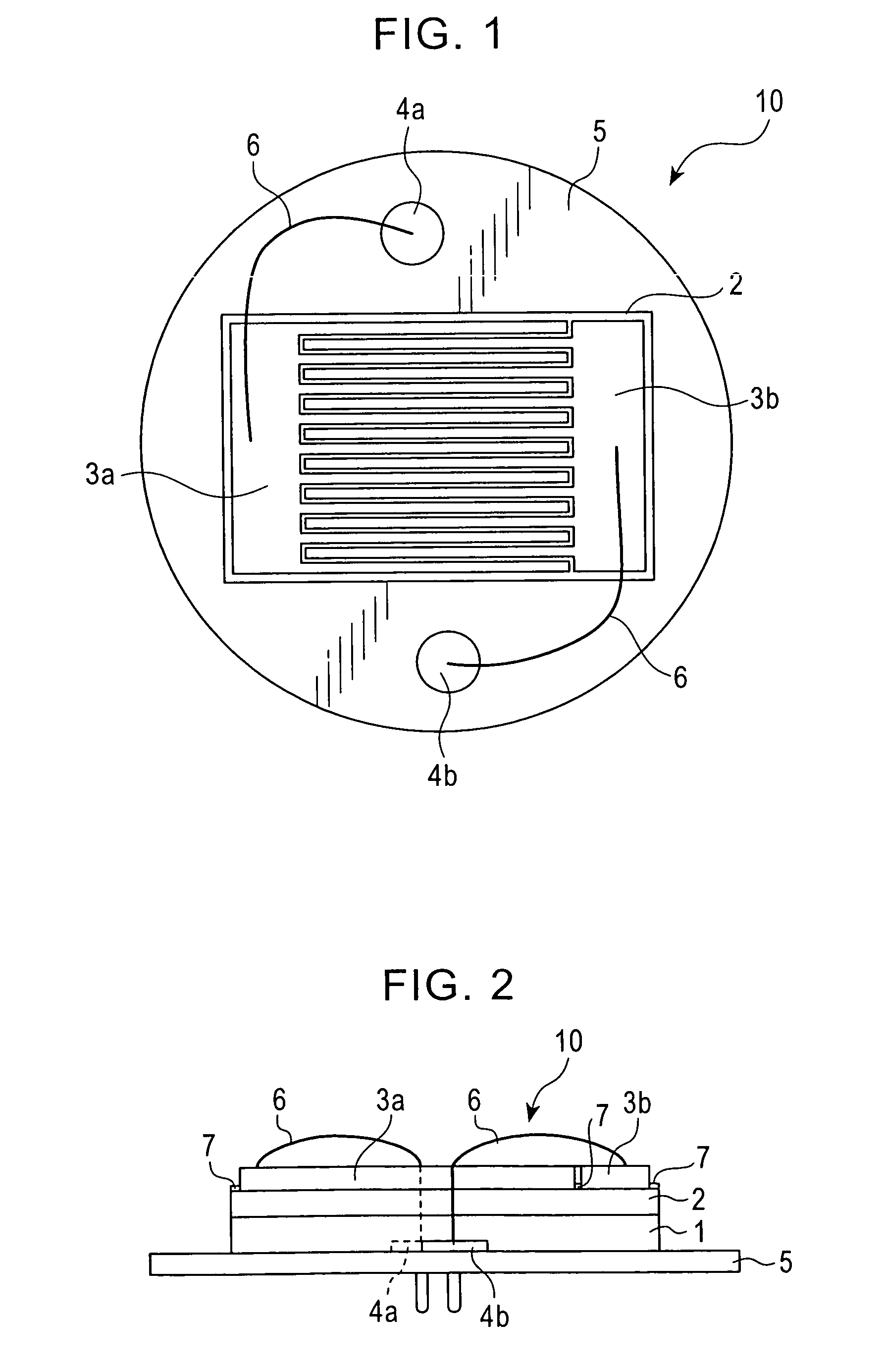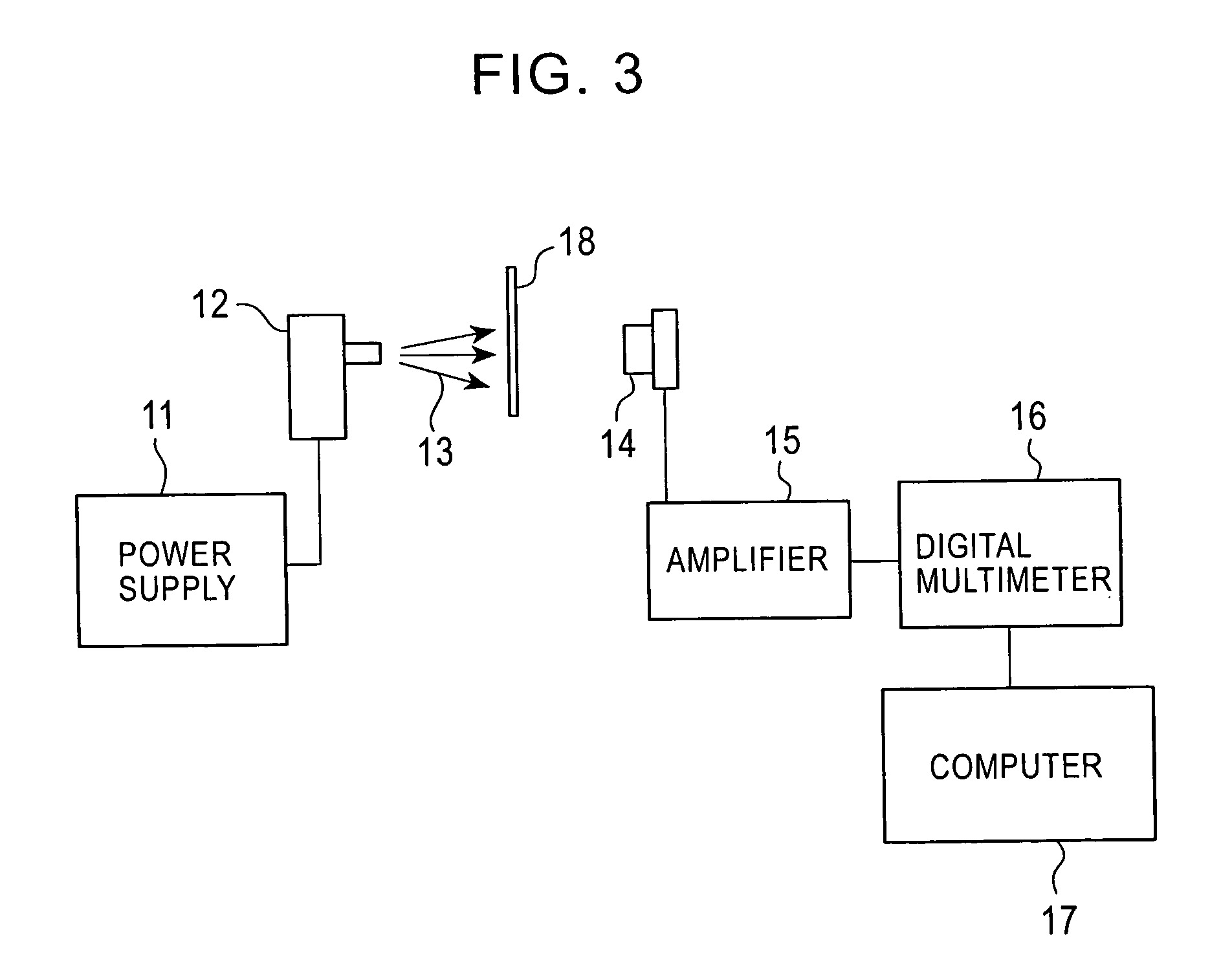Ultraviolet sensor and method for manufacturing the same
a technology of ultraviolet light and sensors, applied in the field of ultraviolet light sensors, can solve the problems of reducing electrical resistance, decomposition of organic compounds present in the atmosphere, dissociation of moisture adsorbed on the sensor surface into ions, etc., and achieves the effect of preventing the adhesion of moisture, constant responsibility, and preventing moisture and organic compounds
- Summary
- Abstract
- Description
- Claims
- Application Information
AI Technical Summary
Benefits of technology
Problems solved by technology
Method used
Image
Examples
examples
[0040]Ultraviolet sensors having the same configuration as that of the ultraviolet sensor 10 shown in FIG. 2 were prepared by the procedure below and then used as samples of an example of the present invention. A (001) silicon wafer 1 with low resistivity was prepared and then exposed to a mixture of methane plasma and hydrogen plasma, whereby the wafer surface was carbonized. A bias voltage was applied to the resulting wafer 1 in the mixture of methane plasma and hydrogen plasma, whereby diamond nuclei were formed on the wafer 1 by epitaxial growth. The application of the bias voltage to the wafer 1 was stopped and diamond was deposited on the wafer 1 for 15 hours using a gas mixture of methane and hydrogen under such conditions that a (100) diamond surface was primarily formed, whereby a highly-oriented insulating diamond layer 2 was formed on the wafer 1. The insulating diamond layer 2 had a (100) surface and a thickness of about 10 μm and crystal grains thereof were oriented in ...
PUM
| Property | Measurement | Unit |
|---|---|---|
| wavelength | aaaaa | aaaaa |
| thickness | aaaaa | aaaaa |
| thickness | aaaaa | aaaaa |
Abstract
Description
Claims
Application Information
 Login to View More
Login to View More - R&D
- Intellectual Property
- Life Sciences
- Materials
- Tech Scout
- Unparalleled Data Quality
- Higher Quality Content
- 60% Fewer Hallucinations
Browse by: Latest US Patents, China's latest patents, Technical Efficacy Thesaurus, Application Domain, Technology Topic, Popular Technical Reports.
© 2025 PatSnap. All rights reserved.Legal|Privacy policy|Modern Slavery Act Transparency Statement|Sitemap|About US| Contact US: help@patsnap.com



